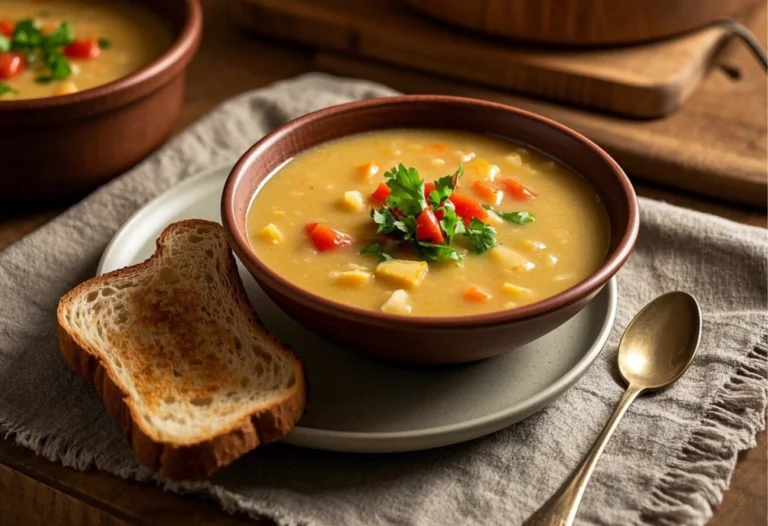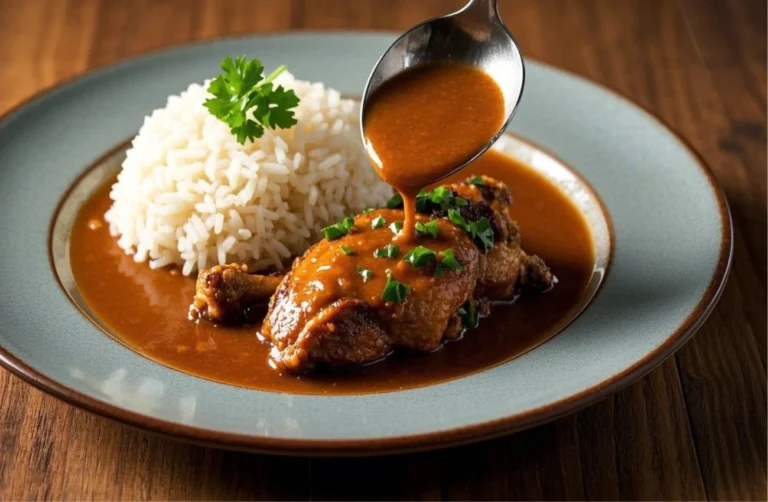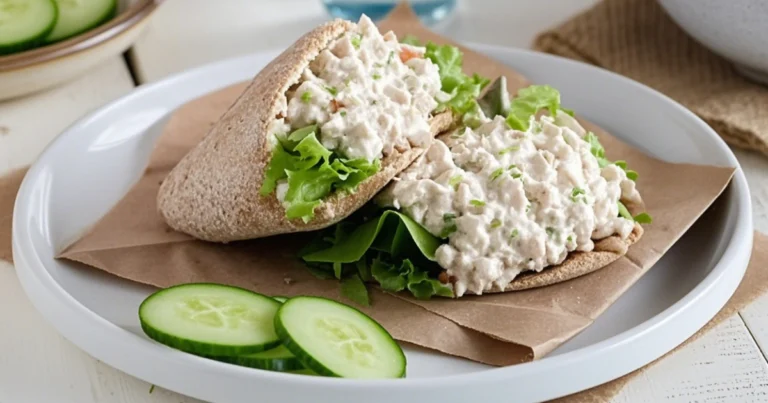Benefits of Brined Chicken | Juicy, Flavorful & Tender In 2025
Table of Contents
Have you ever cooked chicken only to find it dry and tough? You’re not alone. Many home cooks and even seasoned chefs struggle to keep chicken juicy and flavorful. The secret to perfectly tender, mouthwatering chicken isn’t a special cooking technique—it’s brining.
Brining is a simple but powerful process that transforms ordinary chicken into a juicy, flavorful delight. Whether you’re roasting, grilling, or frying, brining ensures that your chicken retains moisture, absorbs seasoning, and cooks more evenly.
If you’re looking to elevate your cooking skills and never suffer through dry chicken again, this guide will walk you through everything you need to know about brining—its benefits, the science behind it, and step-by-step instructions to get it right every time.
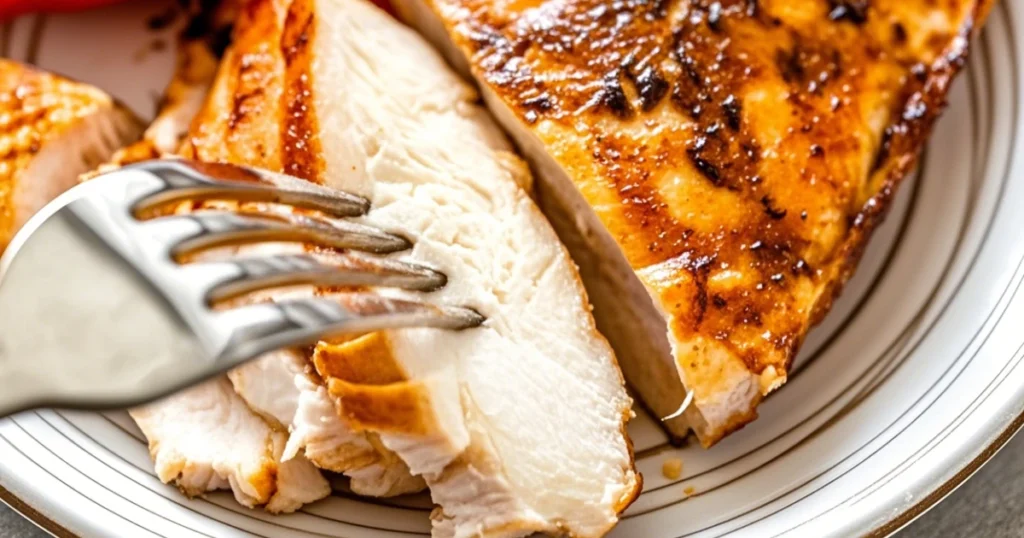
What is Benefits of Brined Chicken? A Quick Overview
Brining is the process of soaking chicken in a saltwater solution (wet brining) or rubbing it with salt and seasonings (dry brining) before cooking. This method enhances moisture retention, improves texture, and infuses deeper flavors into the meat.
Types of Brining:
- Wet Brining: Involves submerging chicken in a saltwater solution. Best for locking in moisture.
- Dry Brining: Involves rubbing salt and seasonings directly onto the chicken and allowing it to rest. Perfect for crispy-skinned roasts.
Both techniques work wonders, but which one you choose depends on your cooking method and personal preference.
Top Benefits of Brined Chicken
Juicier Chicken with Every Bite
One of the biggest challenges in cooking chicken is preventing it from drying out. Brining helps retain up to 40% more moisture compared to unbrined meat, ensuring each bite is tender and succulent.
Enhanced Flavor Throughout the Meat
Unlike marinades that mostly flavor the surface, brining allows salt and seasonings to penetrate deep into the meat. This results in a more balanced, well-seasoned taste, not just on the outside but all the way through.
Improved Tenderness
Brining breaks down muscle fibers, making the chicken much more tender. This is particularly beneficial for lean cuts like chicken breasts, which tend to dry out quickly.
More Even Cooking
Brined chicken cooks more evenly, reducing the risk of dry edges and undercooked centers. The salt in the brine alters the protein structure, allowing heat to distribute better throughout the meat.
Works Well with Different Cooking Methods
Brined chicken performs well in roasting, grilling, frying, and smoking. Whether you’re making a juicy roast, crispy fried chicken, or smoky grilled wings, brining gives you a superior texture and taste.
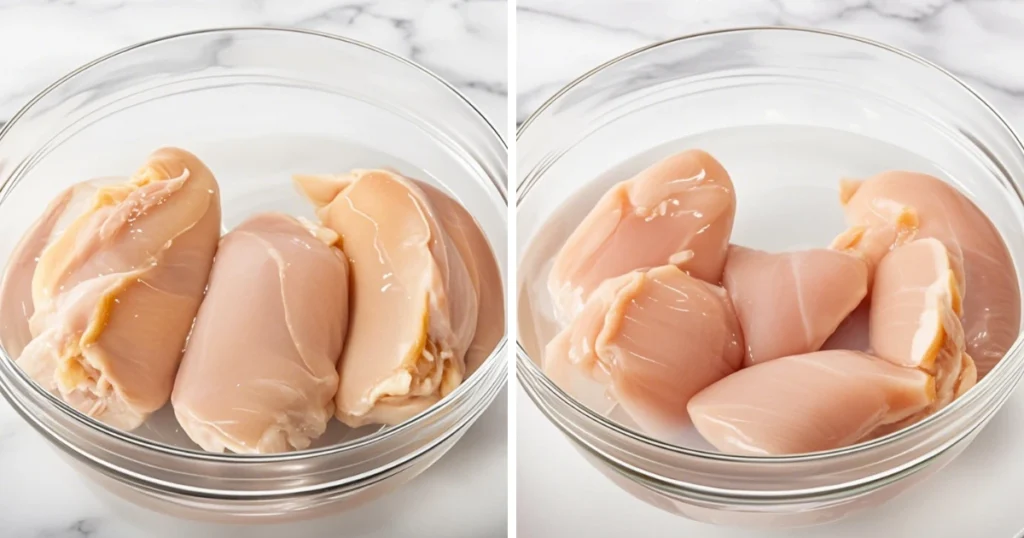
How to Brined Chicken Like a Pro (Step-by-Step Guide)
Wet Brining Method
Ingredients for a Basic Brined Chicken Recipe
| Ingredient | Quantity |
|---|---|
| Water | 4 cups |
| Kosher Salt | ¼ cup |
| Sugar (optional) | 2 tbsp |
| Black Peppercorns | 1 tbsp |
| Garlic Cloves (crushed) | 3-4 |
| Fresh Herbs (rosemary, thyme) | 2 sprigs each |
Instructions
- Prepare the Brine: Heat 2 cups of water and dissolve the salt and sugar. Add remaining water to cool the mixture.
- Add Aromatics: Toss in garlic, herbs, and peppercorns for extra flavor.
- Submerge the Chicken: Place the chicken in a large bowl or zip-top bag and pour the brine over it.
- Refrigerate: Brine for the recommended time:
- Whole Chicken: 12-24 hours
- Chicken Breasts: 1-4 hours
- Chicken Thighs: 1-2 hours
- Rinse & Pat Dry: Rinse the chicken lightly and pat dry with paper towels before cooking.
Dry Brining Method (Simpler & Faster)
- Salt the Chicken: Use ½ tsp of kosher salt per pound of chicken.
- Add Seasonings: Garlic powder, smoked paprika, black pepper, or your favorite spice mix.
- Refrigerate Uncovered: Let it sit for 12-24 hours.
- Cook as Desired: No need to rinse—just pat dry and proceed with your recipe.

Common Mistakes to Avoid When Brined Chicken
- Over-Brining: Leaving chicken in brine too long can make it too salty or mushy.
- Incorrect Salt Ratio: Too much or too little salt affects the flavor and texture.
- Not Rinsing (for wet brining): Can result in an overly salty exterior.
- Skipping the Drying Step: Patting chicken dry ensures proper browning when cooked.
Frequently Asked Questions (FAQ)
What is the ideal salt-to-water ratio for brining chicken?
A standard ratio is ¼ cup kosher salt per 4 cups of water. This ensures the right level of saltiness without overpowering the meat.
Can I Brined Chicken for too long?
Yes! Over-brining can make chicken too salty or mushy. Stick to the recommended brining times to avoid this.
Does brining make chicken healthier?
Brining helps chicken retain nutrients during cooking, but be mindful of sodium intake if you’re on a low-salt diet.
Should I rinse the chicken after wet brining?
Yes, a quick rinse removes excess surface salt. However, if you dry brine, rinsing isn’t necessary.
Can I freeze chicken after brining?
Yes! Brine, pat dry, then freeze. This locks in moisture and makes future meals even juicier.

Conclusion: Elevate Your Brined Chicken Dishes with Brining
Brining is one of the easiest ways to transform dry, bland chicken into a juicy, flavorful masterpiece. Whether you choose wet or dry brining, this simple step guarantees better texture, deeper seasoning, and a more enjoyable eating experience.
Now that you know the secret, why not try it in your next meal? Experiment with different herbs and spices, and see the incredible difference it makes.
Ready to level up your cooking? Start brining today and say goodbye to dry chicken forever!


